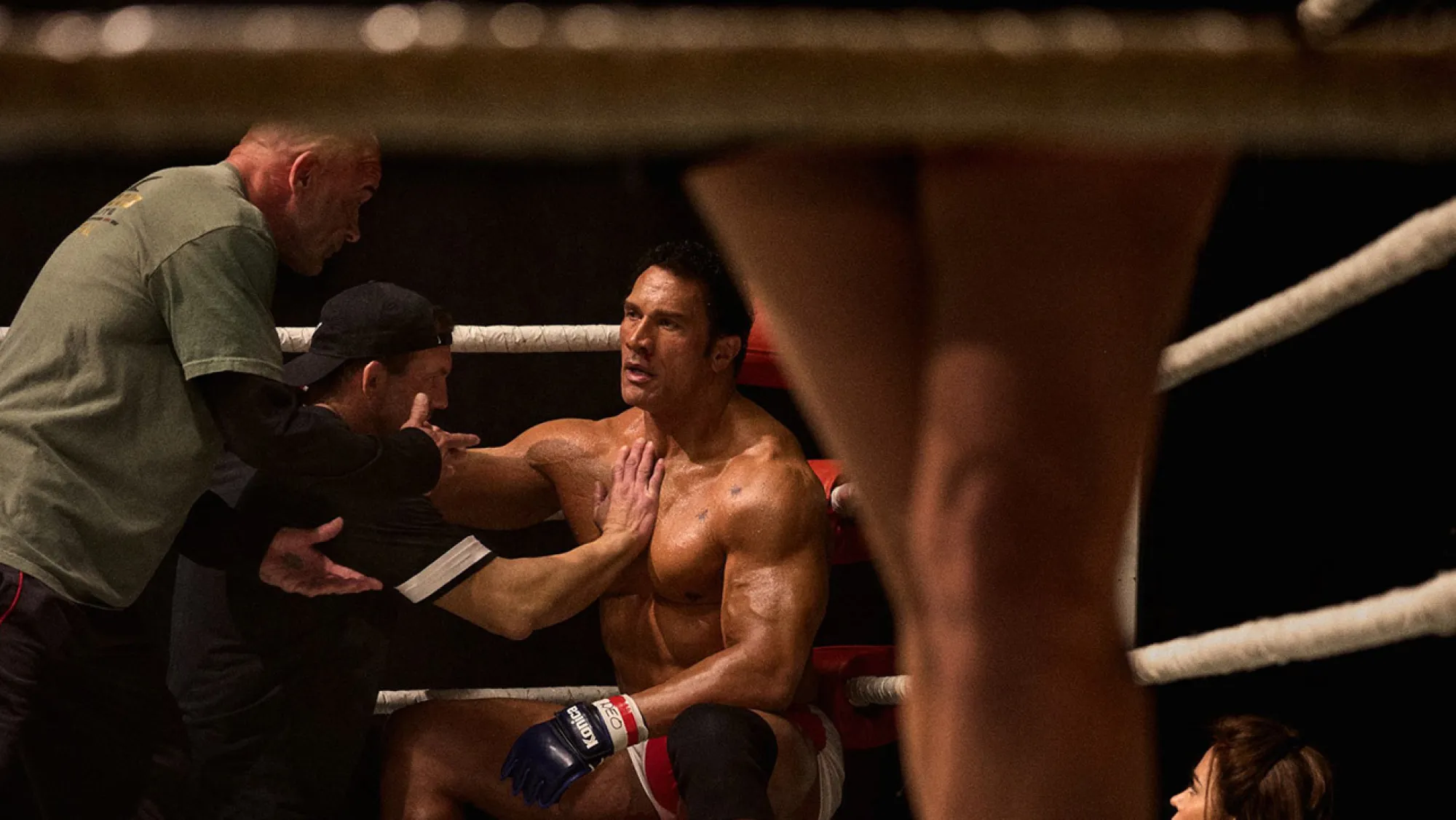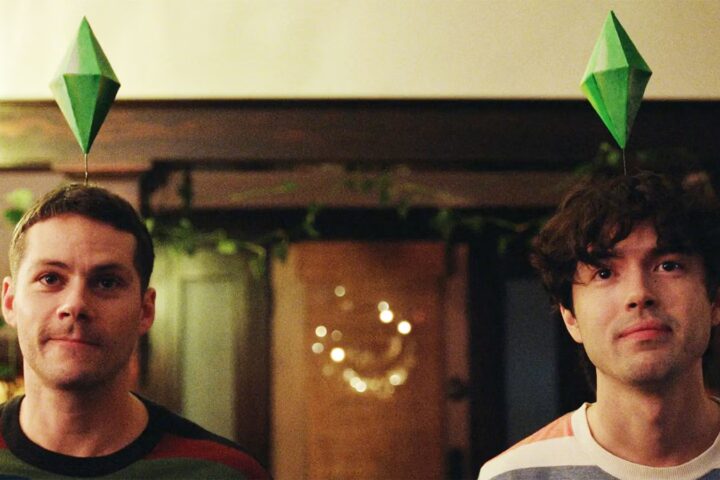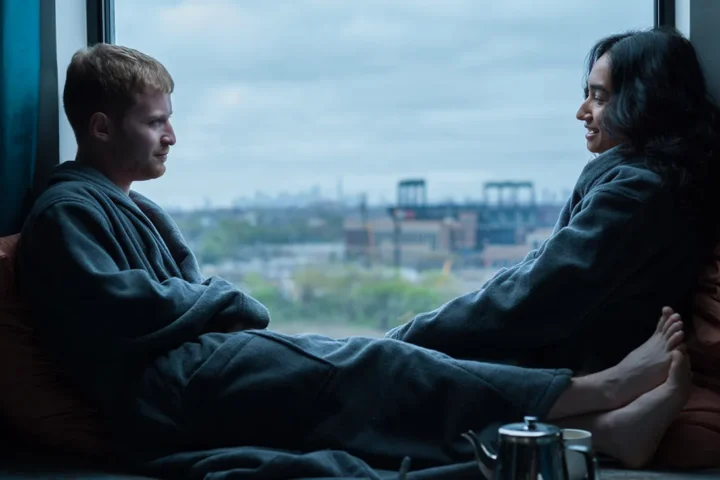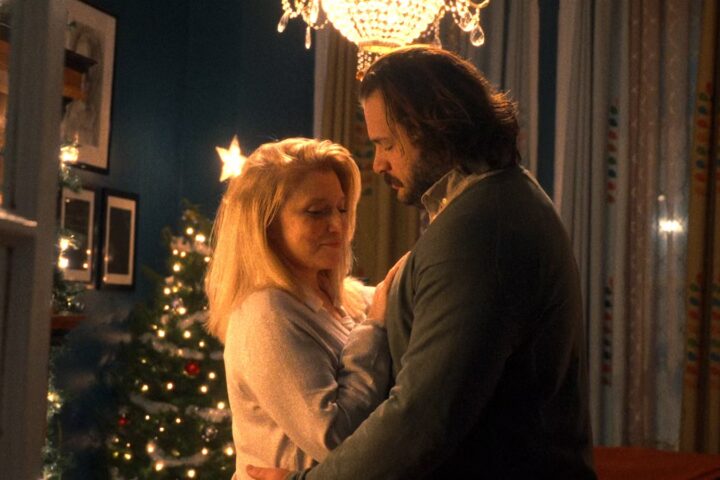The best that can be said about Benny Safdie’s The Smashing Machine is that Dwayne Johnson and Emily Blunt give it everything they’ve got. If only they were able to elevate the material in Safdie’s solo directorial debut, an insular and small-scaled film that manages to be entertaining mostly on the strength of its two leads, both exciting even if the picture around them is not.
In telling the story of MMA and two-time UFC champion Mark Kerr from 1997, a crucial period during which athlete built his legend and helped develop credibility for the sport, Sadfie (who also wrote the screenplay), doesn’t quite make Kerr’s story come alive, and it’s one we’ve already seen, many times over: the once unstoppable athlete undone by demons outside the ring as the thrill of victory meets the agony of defeat. This time, none of it feels special enough to justify a retelling.
Safdie’s picture takes off from John Hyam’s 2002 documentary of the same time, opening with Mark (Johnson) on a championship high, the undefeated hulk who was at the time the biggest in the world. He’s a humble, sweet-natured guy but a beast in the ring, and has the world on a string—fans, journalists and his long-suffering sidekick and girlfriend Dawn (Blunt). That all changes after a devastating Tokyo tournament loss triggers a personal and professional spiral.
Wearing artificial hair and prosthetic facial enhancements, Johnson expertly disappears inside the fractured “smashing machine” Mark, for whom losing is not an option—that is, until he’s brought low by a crippling addiction to daily injections of opioid painkillers that ultimately lead to an overdose. On the sidelines is neglected live-in girlfriend Dawn, who has a habit of showing up at bouts and triggering knock-down, drag out arguments just before Mark takes the ring, which his team, including best friend and fellow fighter Mark Coleman (MMA star Ryan Bader), quietly deem a major performance roadblock.
Safdie shuttles his picture back and forth—Mark training intensely, shooting up, stepping into the ring and then, between fights, arguing with exasperated Dawn, who initially has our sympathies but as the picture progresses, turns out to be self-destructively insecure (the pair married later anyway, according to the end credits). Yet she does have a point—after Mark goes through rehab and comes out clean, he no longer seems the same, and appears critical of her every move; she liked the troubled version better since the new one shares more with his rehab sponsor than with her. One terrific scene finds Kerr criticizing Dawn for not properly caring for a cactus plant or cleaning their pool. In another, a raging Mark destroys a door. Such effective glimpses of their fraught relationship supersede the film’s fight sequences.
For Mark, the idea of losing a fight is out of the question, and there’s something fascinating about a man so strong and powerful who is so ill-equipped for even the mere possibility of failure; Johnson terrifically navigates this paradox. For such a hulking man, a running reference to his “tummy” being upset amuses; fearing nausea, he refuses to get on a spinning carnival ride which Dawn goes alone (good use of Jon Secada’s Just Another Day), displaying a vulnerability he can’t accept in the ring.
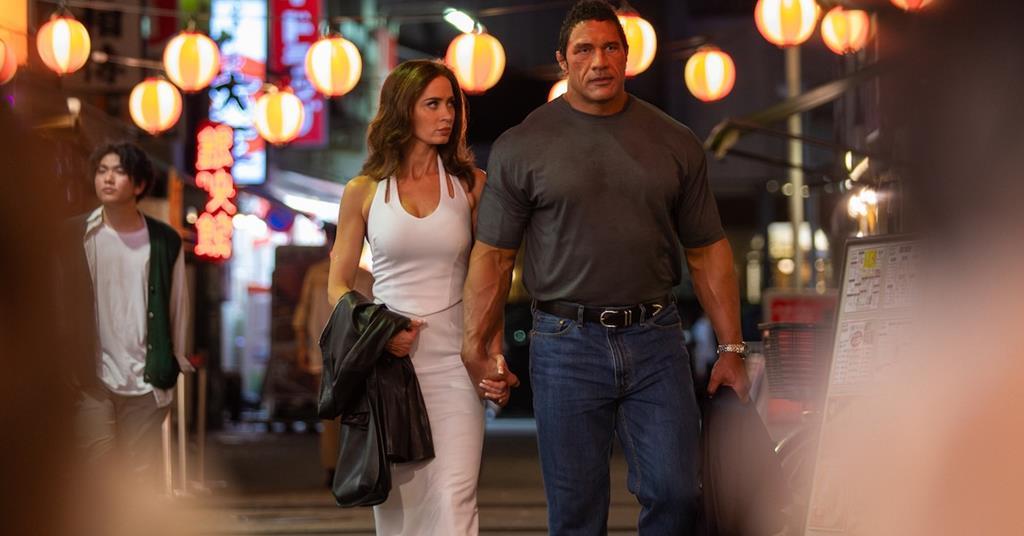
Safdie’s screenplay leans toward schematic—fight, train, fight at home, fight, train, etc.—and less than cumulatively dramatic, and the central relationship issue, whether Mark will ever be able to successfully integrate his passions for fighting and for Dawn, is unresolved. Credit Safdie for eschewing a big climactic redemption in favor of a late, post-fight shower scene in which Johnson expertly conveys Mark’s psychological evolution.
The revelatory Johnson finds real depth in depicting a man whose immensely likable optimism and humility mask a tortured inner struggle. When we first meet Mark he is seemingly untouchable, but as Johnson slowly peels back his many layers, the action star similarly digs beneath his own signature bravado. He’s empathetic every step of the way in Mark’s struggle to reconcile personal chaos with professional discipline. Consequently, “The Rock” completely disappears.
Blunt, meanwhile, is handed a volatile character who keeps the audience at arm’s length. The key to her sensational performance lies in getting us to understand Dawn’s frustration at being excluded from Mark’s world while recognizing that her insecurities and temper tilt her toward becoming the film’s antagonist. Safdie embraces this duality and risks framing her as a contributor to Mark’s downfall. Blunt attacks the role with raw intensity, delivering some of her fiercest work. At times her Dawn is understandable and at others unbearable. Both are intentional.
Visually, Maceo Bishop’s saturated, grainy lensing captures both the grit of the sport and the texture of the late ’90s milieu, incorporating both 16mm film and emulating vintage videotape textures to convincingly transport us to its era.
Safdie checks off the details of Mark’s struggles without making them universal, which may make The Smashing Machine more involving for fans of the sport. But the film doesn’t quite convince us why his story, told in this way, demands the big screen. It circles his life without fully finding a reason to hit harder.
2 stars
